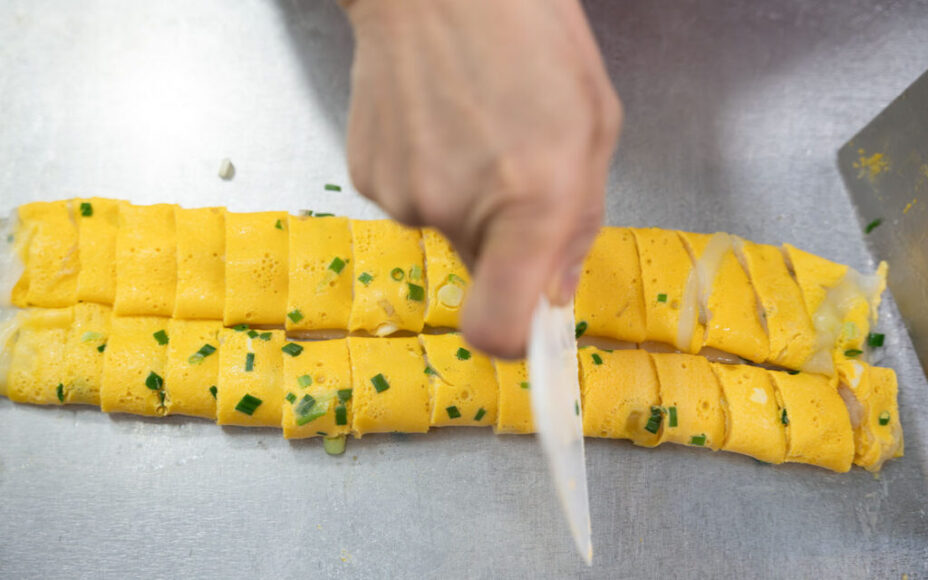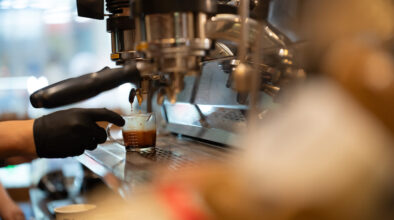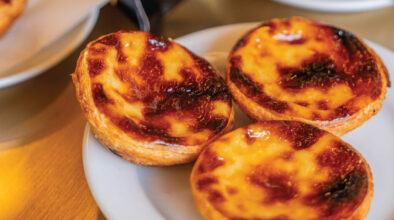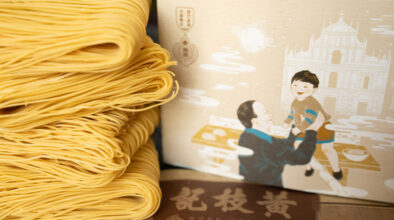Where’s the best place to get a rice roll in Macao? Most people will point you to a shop declaring itself to purvey the city’s “number one duck congee”. Incongruous signage aside, rice roll maestro Lam Won Lun has captured the hearts of locals, travellers and celebrities, whose photos adorn his humble eatery’s walls. And he does it all single-handedly.
The name of this hole-in-the wall better reflects what it’s famous for: Lun Kee Rice Roll. Lam, now in his 50s, has been operating Lun Kee since 2012. Located in the city’s Freguesia de Santo António neighbourhood, very near the Ruins of St Paul’s, the eatery has become something of an online sensation in recent years.
Its latest claim to fame is a listing in the Michelin Guide. No, Lam hasn’t earned a Michelin star. Nor has Lun Kee received a Bib Gourmand, the award bestowed upon friendly eateries offering good food at reasonable prices. But the shop does have a new official listing in what’s recognised around the world as the bona fide foodie’s bible. No one can deny that’s kind of a big deal.
From an extensive menu, the guide’s selected restaurants section singles out Lam’s egg rice rolls, describing them as “simple but delicious, boasting [a] bouncy texture.”
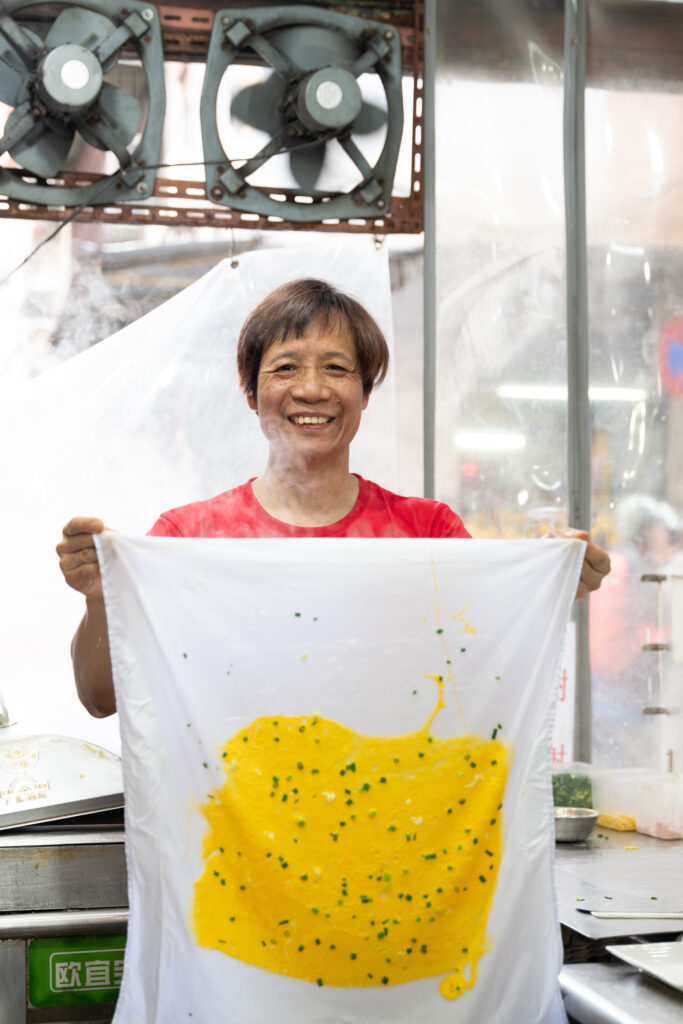
Lun Kee is a far cry from what most people expect from the Michelin Guide, which tends to be associated with fine dining. (Macao, incidentally, is home to 16 Michelin-starred restaurants. Those are the fancy ones). Step inside its tiny premises and you’re hit by billowing steam and the sound of a blaring television. There are only three tables, each seating up to three customers; most people order takeaway.
The two big steamers responsible for Lam’s rice rolls are at the front of the shop, while a congee station at the back accommodates the preparation of around a dozen different types of rice porridge. Of these, a Cantonese staple featuring lean pork, liver and kidneys is a firm favourite, Lam says. His menu also offers stir-fried noodles, deep-fried chicken wings and curried fish balls.
Asked how he manages to juggle all these dishes on his own, Lam tells Macao magazine that “everything comes down to time management.”
Rolling in flavour
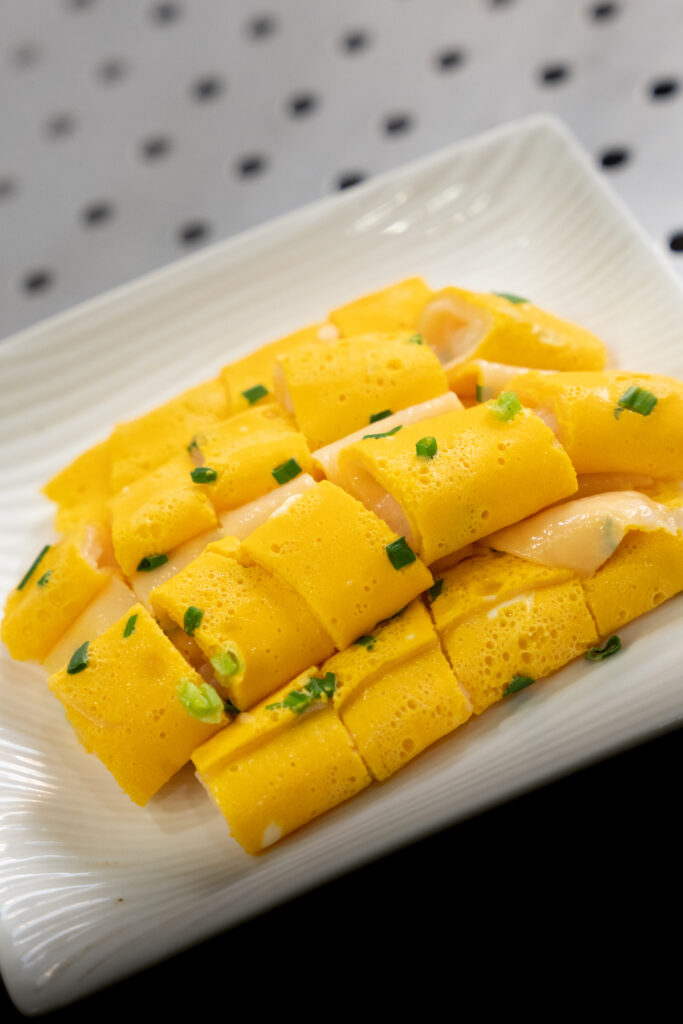
Back to the rice rolls. Conventional rice rolls are easy to find in Macao, typically in the form of thin, silken sheets of rice noodle rolled around fillings ranging from char siu to prawns, then bathed in soy sauce. But Lam’s take on this traditional dim sum is subtly different. His sheets are noticeably thicker than others, and he shuns the use of soy sauce. According to Lam, most cooks apply soy sauce to enhance their rice rolls’ silken texture – especially if they’re not so soft to begin with. Lam has enough confidence in his ability to prepare perfect rolls, time after time, not to feel a need for it. Indeed, each rice roll from the Lun Kee steamer is springy and tender, and each bite melts in your mouth.
Popular fillings for standard rice rolls at Lun Kee include scallions, dried prawns, black truffle with prawns, beef, sweetcorn and char siu. And then there’s the yolk-yellow egg rice roll. This option, garnished with bright green scallions, is particularly popular with food-themed influencers.
To make his rolls, Lam first places a permeable cloth on a steamer. Then he pours a finely tuned mixture of flour and water onto the fabric, resulting in a rectangular wrapper with an even thickness. After a short time steaming, Lam sprinkles his customer’s choice of fillings over the sheet, before deftly rolling it up. You can then drizzle your preferred combo of sweet, spicy and sesame sauces over the snack.
“You can find rice rolls everywhere in Macao, but nobody else is innovative with them,” Lam says. “I love studying food. I have been intensively improving my rice rolls for many years.”
Striking out on his own
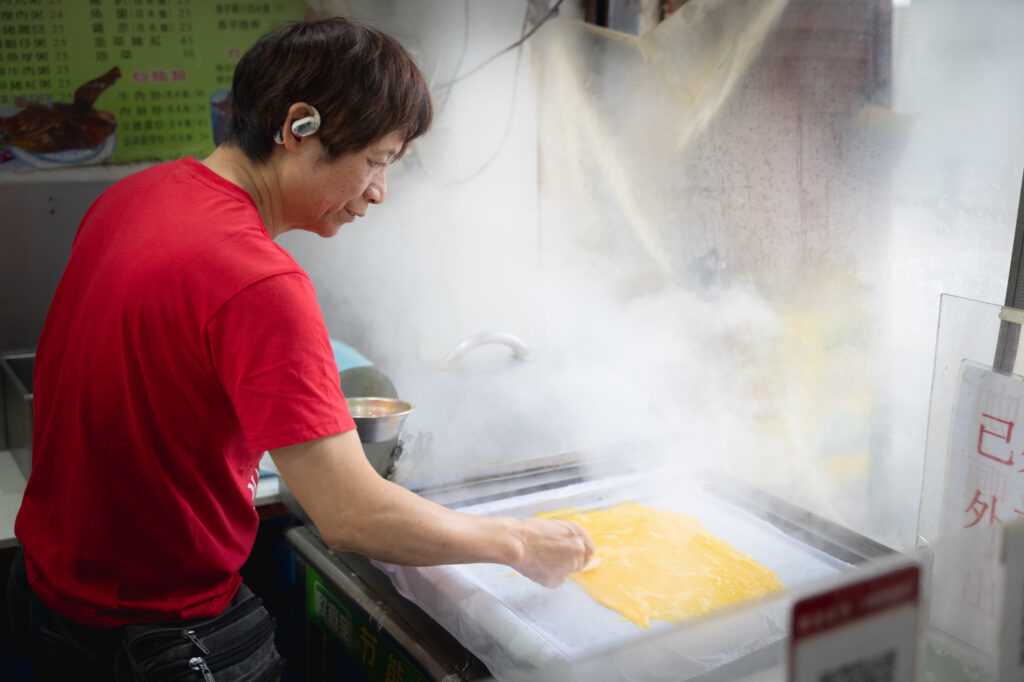
Lam’s cooking career started 30 years ago, when he cut his teeth in the Cantonese restaurants of hotels like the Grand Hyatt Macau. When, in the early 2010s, he decided it was time to start his own business, he signed a lease for the very same premises he works out of today. Rice rolls hadn’t been his specialty in the hotel kitchens, but Lam was drawn to them. Why? His answer is simple: “I like rice rolls and I wanted to make them for breakfast.”
First came the experiments. Lam trialled lots of different recipes, adjusting them for taste and texture. After opening Lun Kee, he spent the first two days handing rice rolls out for free in order to harvest feedback from potential customers. Not everyone loved those initial batches. Lam admits some of these guinea pigs bluntly told him his rolls were “awful”. But Lam persevered. He reckons he perfected his basic recipe within three months.
One day, a customer asked Lam if he could whip up a batch of rice rolls with egg. Seizing the day, he dashed to the store across the road and bought a box of those critical ingredients. He then spent just a few seconds to figuring out how to actually make the custom order. “I ended up splitting the process into two sections, making the rice flour sheet first, and then laying the whisked eggs over it … and it worked!” he explains. That was the birth of what’s become a signature dish for Lun Kee.
Business boomed quickly and, for a few years, Lam recruited four staff members to help keep up with demand. Testament to his rice rolls’ quality, busy times could see customers spend more than an hour queuing for a plate of his famous savoury snack.
A regional reputation grows
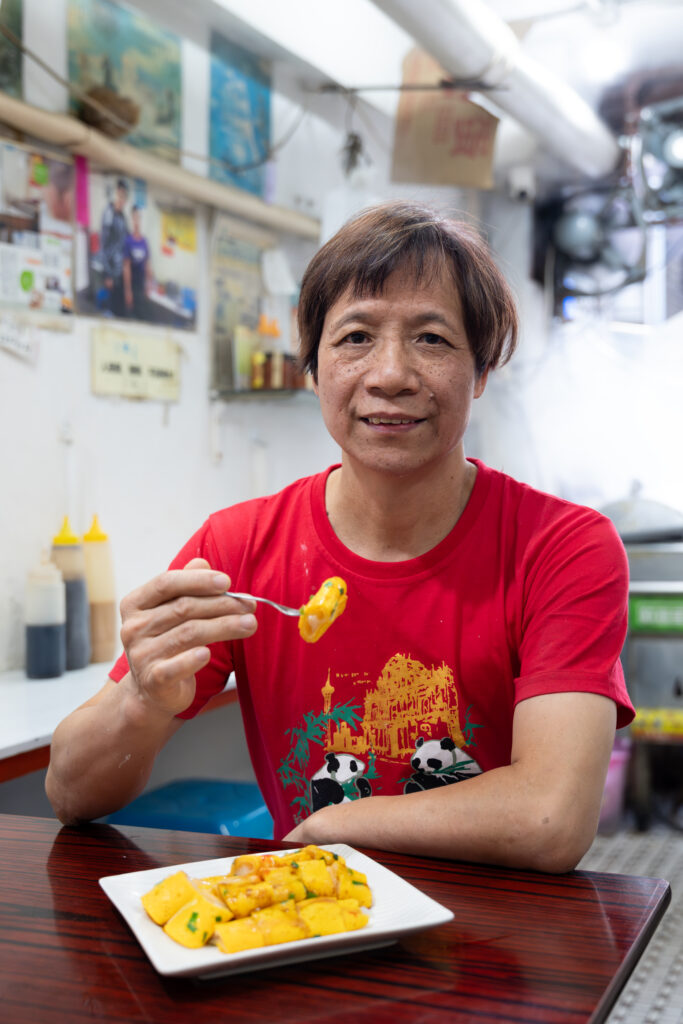
Locals in the neighbourhood have been very supportive of his business, Lam says. He’s also been chuffed to see his reputation as Macao’s king of rice rolls spread beyond the city’s borders. Press coverage in Hong Kong has been part of that, but it’s Taiwanese foodies posting their rice roll experiences online that seems to have made Lun Kee a must-visit on Macao itineraries. Lam estimates that around 60 percent of his customers hail from Taiwan these days.
Lun Kee’s good name is spreading even further with its inclusion in the Michelin Guide. Many travellers turn to the guide when planning a trip to a new region, especially when visiting a UNESCO City of Gastronomy like Macao. Naturally, the Special Administrative Region is packed with renowned eateries to suit every taste and budget. Lun Kee – classified as street food by Michelin – is certainly at the affordable end of the spectrum, rubbing shoulders with Lord Stow’s Bakery (a celebrated purveyor of Macao’s famous egg tarts) and Rua de Felicidade’s multi-generational noodle shop, Cheong Kei.
In the Bib Gourmand category, foodies can find the Macao University of Tourism’s Educational Restaurant, famed for its Macanese buffet each Saturday, the authentic Portuguese restaurant O Castiço and a range of excellent value Chinese options.
When it comes to the crème de la crème of Macao’s dining scene, those eateries that have earned Michelin stars, things can get very fancy. To illustrate: At Jade Dragon, a three-starred Cantonese restaurant in Cotai, the guide gushes that while its “Chinese art, ebony, crystal, jade, gold and silver are all used to great effect, they don’t outshine the food”. The cuisine in these categories hails from around the world. Macao Peninsula’s Robuchon au Dôme (also three-starred) boasts a contemporary French degustation menu and one of the best wine lists in Asia, according to the Michelin Guide. Two-starred Mizumi, in the NAPE district, serves up a kaiseki set menu for the ultimate Japanese fine dining experience, while one-starred 8 1/2 Otto e Mezzo Bombana, in Cotai, offers Sicilian fare to “awaken the taste buds”.
Interestingly, Lam only found out he was rubbing shoulders with such illustrious establishments when customers from countries like Malaysia started telling him how they’d found out about Lun Kee. He has no idea who the Michelin tasters who paid him a visit even were: “I guess they just came as customers and found my rice rolls delicious,” he laughs.
Lam takes great pride in his culinary creations, and doesn’t think it’s a stretch to say he’s helped revive a classic dim sum’s popularity with his innovative approach. To him, the future – his own and the rest of Macao’s dining scene – looks bright. “The market is recovering,” he says. “With the government’s support and the huge portential of our food and drink industry, there’s still room for growth … as long as we maintain the quality of our dishes and provide excellent customer service.”
